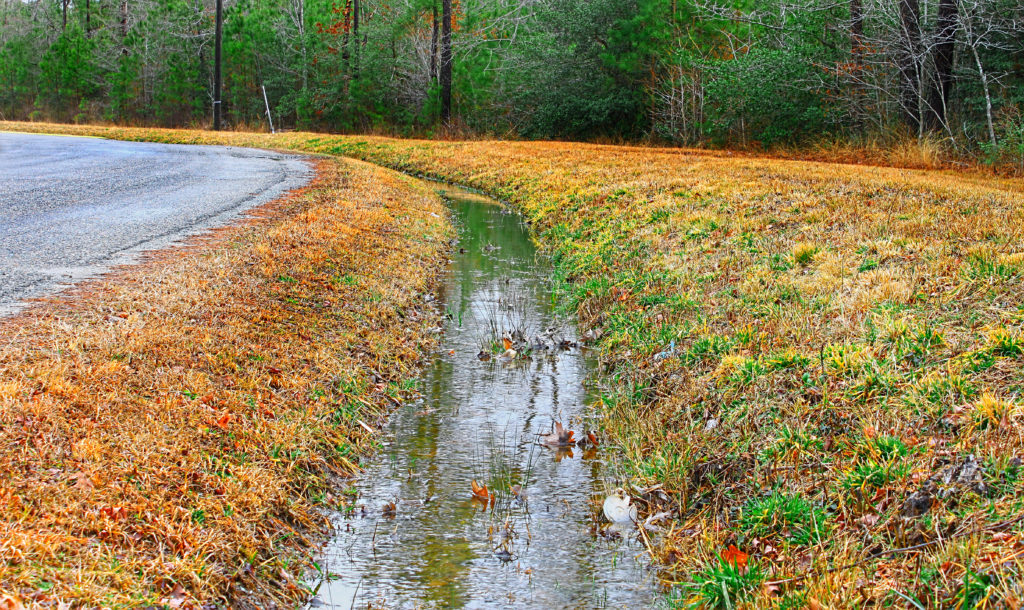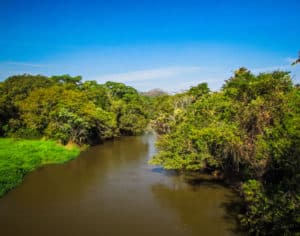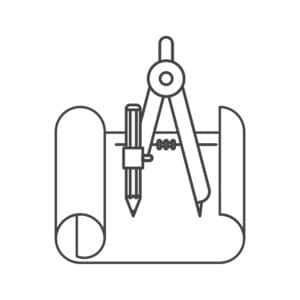A drainage swale is a vegetated channel used in land development designs to divert stormwater runoff usually to a waterway, a storm sewer inlet, or a stormwater management basin.
A drainage swale is often also referred to as a ditch or a grass channel and is located in open grass areas or along the side of a road or driveway. You might have already heard some people refer to one as a roadside ditch before.
The Various Shapes and Sizes of Drainage Swales
There are many shapes and sizes that a drainage swale can be designed to be.
The most common shapes include trapezoidal, v-shaped, and elliptical.
The overall width of a drainage swale can range from as small as four feet to as large as 20 feet. The depth of a swale can start from 0.5 foot to as high as 2 feet.
The Factors Involved With a Drainage Swale Design
The following are the main factors that are considered in a drainage swale design.
1) Total stormwater flow rate to the most downstream point of the swale.
Related: What Is Hydrology in Civil Engineering?
2) Slope of the swale.
3) Type of vegetation used to line the swale.
4) Amount of space that is available for swale grading.
Freeboard Requirements
As a part of a drainage swale design, a certain amount of freeboard may be required as part of the swale capacity calculations. Freeboard is the distance between the design water level in the swale and the top of the swale. Having this extra distance adds a factor of safety to the design.
The amount of freeboard required will most likely depend on the municipality or the individual who is reviewing your project.
How to Design a Drainage Swale
The following are the main steps involved with the design of a drainage swale.
1) Research municipality ordinances or any other applicable regulations to determine any swale design requirements.
2) Determine the drainage area to the most downstream point of the proposed swale.
3) Prepare the hydrology calculations for the drainage area to determine the total stormwater flow rate to the swale.
4) Determine the slope of the swale.
5) Choose the shape, size, and lining type for the swale.
6) Calculate the capacity of the swale using the appropriate engineering formulas or using special design software.
7) Check that the swale meets any freeboard requirements.
8) Add the proposed swale to the grading design of the land development plans.
An Important Part of the Stormwater Management System
The adding of swales to a land development project is an important part of the overall stormwater management system. Swales could be what are required in open space and grass areas in order to get certain areas of your site or certain offsite areas to drain to your system.
The design of some stormwater management systems might depend on the collection of certain drainage areas that can be collected only through the use of drainage swales.
Related: Stormwater Management (A Guide for the Non-Professional)



